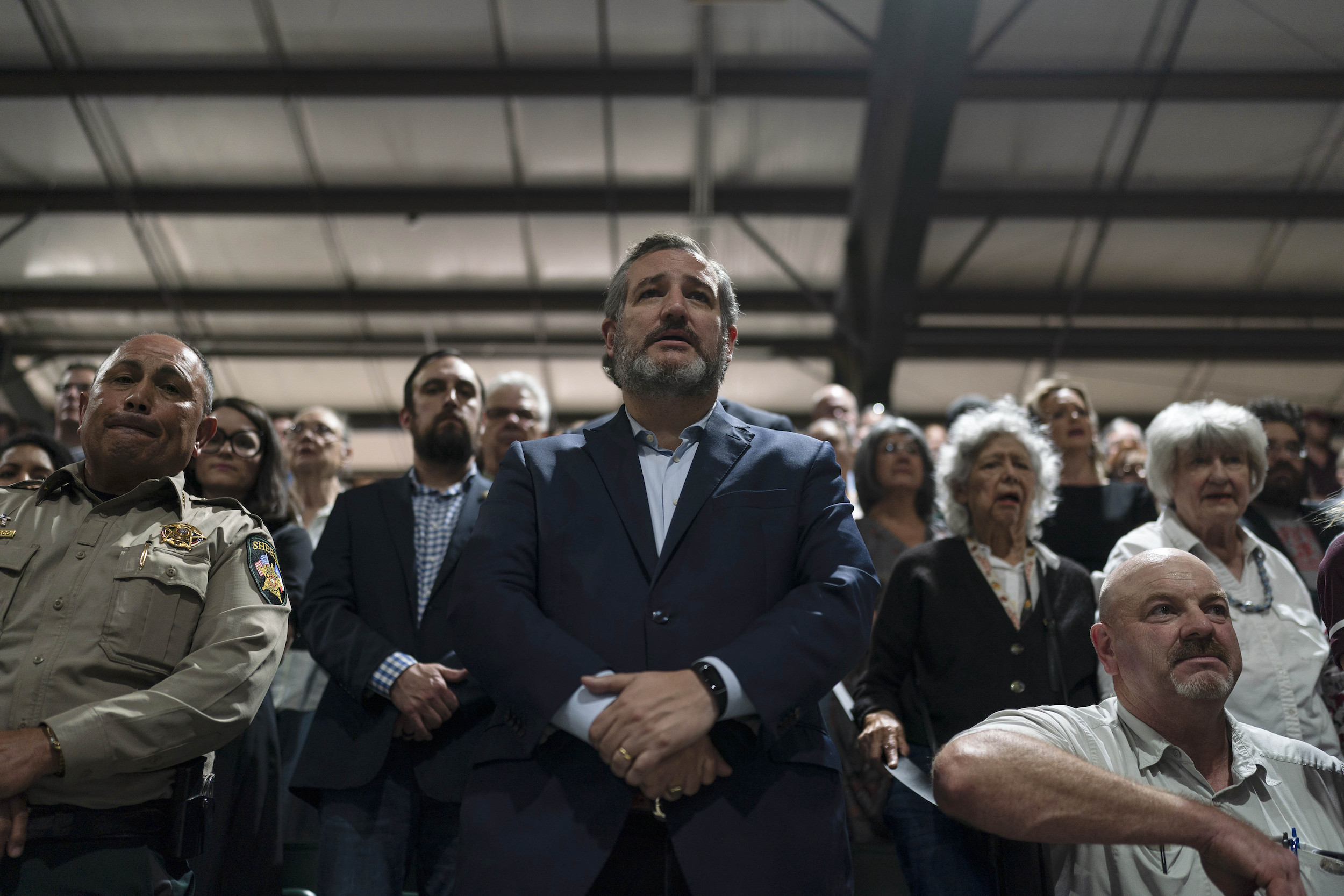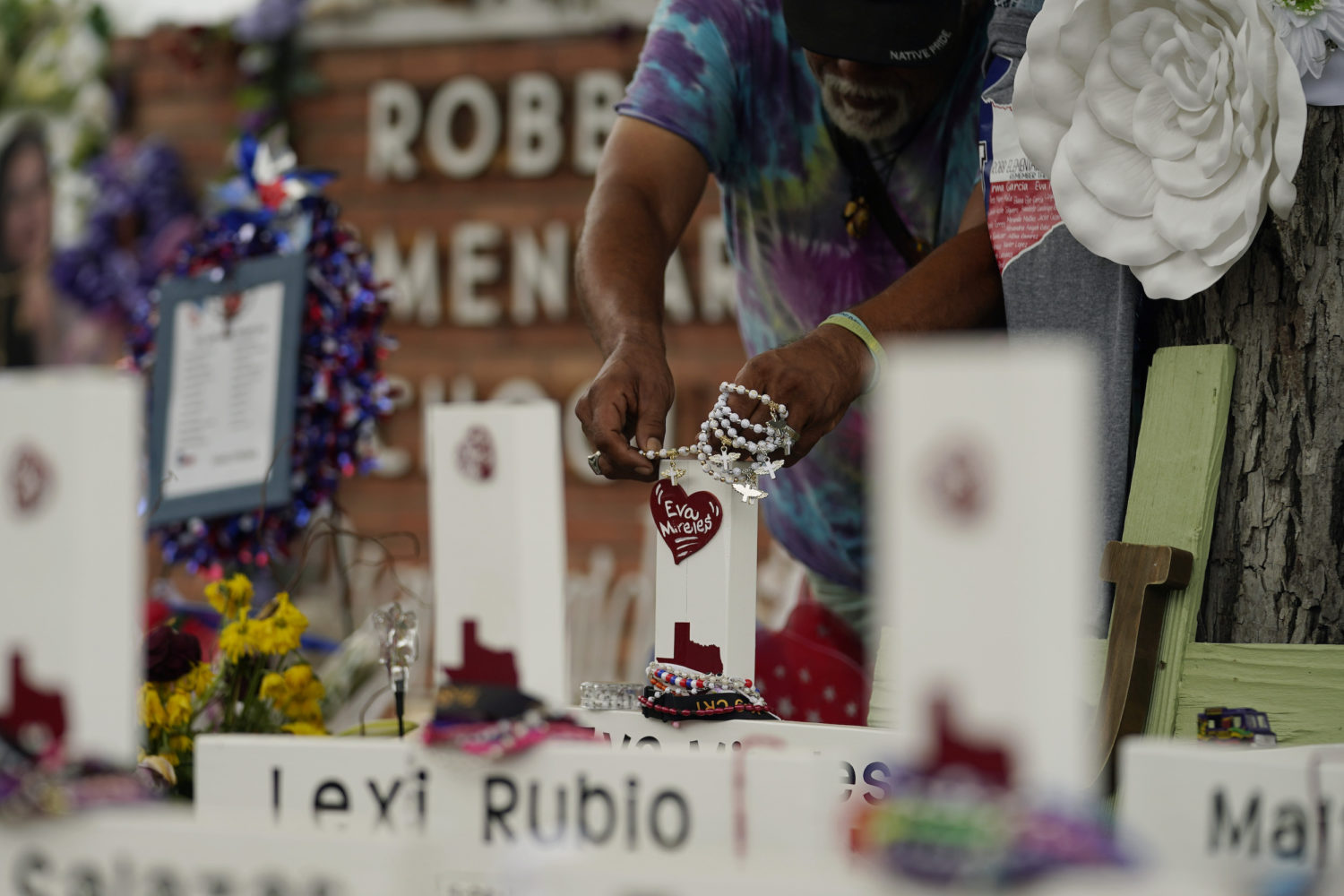Sen. Ted Cruz, R-Texas, has blamed others for politicizing the school shooting in Uvalde, Texas, to advance discussions about gun access.
To Cruz, the answer is simpler.
“We know from past experiences that the most effective tool for keeping kids safe is armed law enforcement on the campus,” Cruz said in Washington on May 24, just hours after the shooting, before many details were known.
Ted Cruz proposes armed cops in elementary schools to deter school shootings pic.twitter.com/sJ8B6cf9Xd
— Aaron Rupar (@atrupar) May 25, 2022
“Inevitably when there’s a murder of this kind, you see politicians try to politicize it, you see Democrats and a lot of folks in the media whose immediate solution is to try to restrict the constitutional rights of law-abiding citizens. That doesn’t work. It’s not effective. It doesn’t prevent crime.”
Is it true that we know from “past experiences that the most effective tool for keeping kids safe is armed law enforcement on the campus”?
No.
Whether it’s anecdotal evidence or broad-based research, there is little to support Cruz’s claim. Let’s start with what happened in Uvalde, Texas.
Uvalde shooting details
Officials have offered various and conflicting reports at what happened at Robb Elementary School. On May 25, Director of the Texas Department of Public Safety Steven McCraw said that before 18-year-old Salvador Ramos entered the school and shot and killed at least 19 children and two teachers, he was confronted by a district school resource officer, a common title for armed police officers who work on school grounds.
“There was a brave consolidated independent school district resource officer that approached (Ramos), engaged him and, at that time, gunfire was not exchanged,” McCraw said. “The subject was able to make it into the school.”
Other media accounts offer some different details about the number of officers and the level of confrontation.
And then on May 26, Texas law enforcement officials said Ramos was able to enter the school unobstructed and that a school resource officer was not on scene.
“He walked in unobstructed initially,” said Victor Escalon, regional director for the Texas Department of Public Safety.
Law enforcement officers ultimately shot and killed Ramos, McCraw said, but not before at least 21 people were killed and 17 additional people were injured.
The Sante Fe, Texas, shooting
In 2018, in Texas, Cruz responded to another school shooting, this one at Santa Fe High School, in Santa Fe, Texas.
In that case, the shooter was confronted by two police officers who were stationed at the school, according to a local sheriff. The officers, one of whom was shot during the attack, “hemmed the gunman into one classroom and saved lives by drawing his attention and fire,” the sheriff said.
About 30 minutes after the shooting started, the 17-year-old suspect surrendered to law enforcement. A total of 10 people were killed and 13 were wounded. Multiple explosive devices were also found at or near the school, officials said.
The Trace, a nonprofit newsroom that focuses on gun issues, found that in Santa Fe and in three other prominent shootings in 2018 — Kentucky’s Marshall County High School in January; Florida’s Marjory Stoneman Douglas High School in February; Maryland’s Great Mills High School in March — “attackers stormed campuses despite the presence of armed guards.” In each case, guards failed to stop the shooter from killing.
What research says about armed law enforcement in schools

Sen. Ted Cruz, R-Texas, attends a prayer vigil in Uvalde, Texas, Wednesday, May 25, 2022. The vigil was held to honor the victims killed in Tuesday’s shooting at Robb Elementary School. (AP Photo/Jae C. Hong)
Broader research provides not much support for Cruz’s claim that armed law enforcement officers on school grounds are the “most effective tool” for keeping kids safe from mass shootings.
A 2021 study conducted by researchers from University at Albany and RAND examined data from U.S. schools between 2014 to 2018 to evaluate the impact of school resource officers. It found that school resource officers “do effectively reduce some forms of violence in schools, but do not prevent school shootings or gun-related incidents.”
In addition, that study found that school resource officers appear to protect students from “a non-trivial number of physical attacks and fights within schools,” which could have long-term academic and psychological benefits for students. But schools with resource officers also report more suspensions, expulsions, police referrals and student arrests — and those harsher disciplinary punishments disproportionately fall on Black students, male students and students with disabilities.
Another 2021 JAMA Network study conducted by researchers at Hamline University and Metropolitan State University in Minnesota examined a total of 133 school shootings and attempted school shootings from 1980 to 2019.
It was limited by the availability of public data and the inability to measure deterred shootings, among other factors, but researchers found that, controlling for other factors such as location, school type and region, the data showed “armed guards were not associated with significant reduction in rates of injuries” during school mass shootings.
Further, when researchers controlled for location and school characteristic factors, “the rate of deaths was 2.83 times greater (emphasis added) in schools with an armed guard present.”
Pete Blair, the executive director of the Advanced Law Enforcement Rapid Response Training Center at Texas State University, said armed individuals can play a role in stopping school shootings in progress but cautioned against any claim that it’s “the most effective tool” or that it prevents school shootings.
In Illinois in 2018, for instance, officials credited an officer with avoiding a potential school shooting involving a student at the school. The shooter’s mother said she thought her son was trying to get the police to kill him. Only the shooter was injured.
Blair said the ALERRT Center is part of a group that works with the FBI to release annual active shooter data. The FBI defines an active shooter as “one or more individuals actively engaged in killing or attempting to kill people in a populated area.”
That data shows that from 2000 until 2021, there have been 434 active shooter incidents, Blair said. This includes shooter incidents in schools and elsewhere.
“The most common resolution is for the attacker to flee,” Blair said, which happened in about 25% of all cases.
In about the same number of cases, the shooting stopped when a responding on-duty police officer, armed security or off-duty officer shot the attacker, he said.
Blair said the data isn’t specific enough to break down whether police officers who used force to stop an attack were already stationed there at the time — as a school resource officer likely would be — or were called in specifically to respond to the incident.
Dewey Cornell, a professor of education at the University of Virginia who studies school safety, bullying and student threat assessment, said he has seen research that suggests school resource officers “can be valuable in building relationships with students and working with threat assessment teams, but not as armed guards protecting the campus from a shooter.”
“I know of no scientific evidence that having armed law enforcement on campus by itself keeps kids safe at school,” he said. “We have prevented school shootings by identifying threats and working with troubled students before they make an attack.”
Are armed officers a deterrent?
PolitiFact found no studies or research that conclusively showed that the presence of armed officers deterred people from targeting schools.
“From a theoretical point of view, it makes sense. Trying to prove it empirically can be difficult,” Blair said. “I can’t point to any specific cases and say, here’s this specific case where this person said, they looking at this and they chose not to because there was an armed security guard there.’”
The 2021 JAMA Network study said data suggested “no association between having an armed officer and deterrence of violence” in mass shootings from 1980 to 2019.
“Prior research suggests that many school shooters are actively suicidal, intending to die in the act, so an armed officer may be an incentive rather than a deterrent,” the study said.
Steve Guest, a spokesperson for Cruz, pointed to a 2019 Vox article that referenced 2005 research that suggested increased police presence leads to fewer people committing crimes. The article and research wasn’t looking at school shootings specifically.
The spokesperson also referenced a 2018 report that found for 238 middle and high schools in West Virginia, the presence of resource officers “increases the number of reported incidents related to drug crime as well as the number of out-of-school suspensions for drug crime, but decreases violent crime and disorder when multiple years are considered.” Again, the report wasn’t looking at school shootings specifically. It did say that school resource officers are more likely to work with law enforcement to create a written plan for “how to deal with shootings.”
Our ruling
Cruz said, “We know from past experiences that the most effective tool for keeping kids safe is armed law enforcement on the campus.”
A 2021 JAMA Network study said data found “no association between having an armed officer and deterrence of violence” in mass shootings from 1980 to 2019. A 2021 study by the University at Albany and RAND said school resource officers “do not prevent school shootings or gun-related incidents.”
We rate this claim False.
This article was originally published by PolitiFact, which is part of the Poynter Institute. It is republished here with permission. See the sources for these fact checks here and more of their fact checks here.







